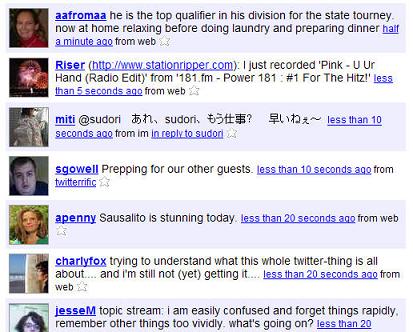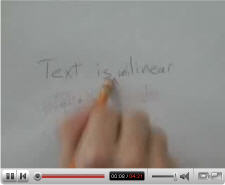Two weeks ago, at the end of my latest post exclusively about Twitter, I announced that I would let you know the outcome of a little two-week test. In it, I temporarily opened my “Tweets” to the world, so to speak. My posts became part of the Public Timeline of Twitter posts. In that time I’ve continued to enjoy what I like about Twitter: Being able to keep in touch with friends who are on it. But I have to say the foray into the public conversation didn’t amount to much more than that.
I didn’t know what to expect, but here were a couple things that I considered possibilities:
- Some people might pick up on references to my more provocative blog entries (such as this one, about mobile communication and the Virginia Tech shootings) and respond directly through Twitter
- Others would actually click through to those entries, using URLs that I inserted in the Tweets, and possibly even comment on the blog entry
Someday this might happen for someone. Neither did for me. I suspect that my Tweets were too diffused among the millions of others. Without a way for users to filter by preferences or topics, my Twitter posts became a few needles in an ever-growing haystack. Without context, these “microblog posts” zoomed past and faded without incident.
Well, almost. The day after I began the experience, I received the following:
- My one and only visit to this blog that I can directly trace as a click-through from the Twitter public timeline (sheesh!)
- A single message from an “admirer” of my golden (albeit truncated) prose: A spammer trying to get me to visit his site where he was selling something (Does my prose look like I need Viagra?)
It’s not that I was expecting the sort of bank run that Digg.com got when its users started posting an illegal DVD unlock code. But I was hoping for something of interest.
Especially, I was wondering if I could expand my online social network, as I have recently with activities in LinkedIn. I’ll be writing more about LinkedIn in a future post. As for Twitter, starting today I’ll be henceforth mum on the topic.
If you want to reach out to me in a public network, you’ll just have to join my growing — and quite interesting — LinkedIn connections list. Here is my Profile: http://www.linkedin.com/in/jefflarche
Postscript: I just went on the Public Timeline and was astonished to see a friend’s Tweet: Way to go, Jazyfko! I hope your cold is getting better.
Update on May 26, 2007: One of the more promising applications of Twitter so far is the recently launched Truemors, the latest start-up by Guy Kowasaki.
Â

